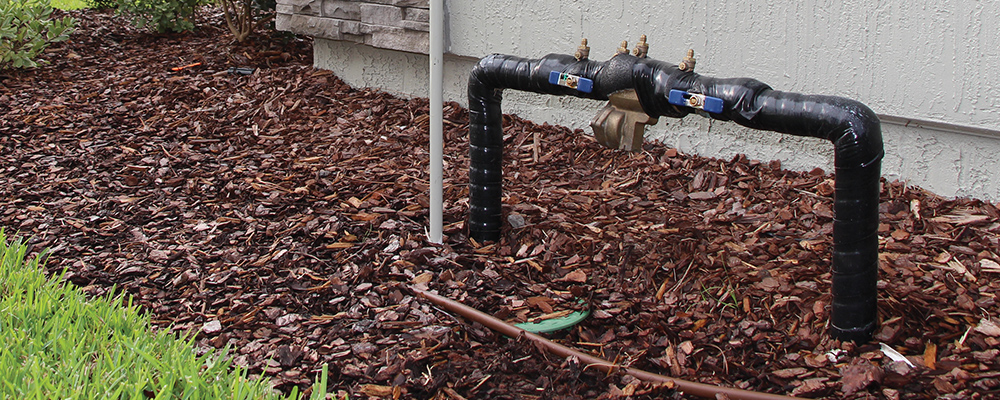Backflow
JEA Cross Connection Control
JEA’s Cross Connection Control Program is mandated by the Florida Department of Environmental Protection to safeguard the drinking water supply from contamination. Cross connections can occur anywhere the public water supply is connected to any other water source. These cross connections pose a hazard if water that has been delivered from a different source enters the public water supply. Cross connections can also occur if water delivered from the JEA line contacts chemicals or other pollutants. Backflow events can return this polluted and/or untreated water to the drinking water system.
Residential Cross Connection Control and Backflow Prevention
Backflow
Backflow is the flow of water from a customer’s water system into the public water supply. Backflow may be caused by backsiphonage (lowered pressure on JEA’s side) or back pressure (higher pressure on the customer’s side).

A backflow preventer is a mechanical device that prevents water from entering the public water supply.
Explore Solutions and Save
Learn about all the ways JEA helps Northeast Florida families, businesses and our community thrive and how we can help you do more.
Related Links
-
Water Supply
JEA delivers more than 120 million gallons of water each day to our customers. We regularly test the water we send to customers to ensure its safety, as outlined by federal and state regulatory agencies. Our state-of-the-art technology monitors our water supply grid to bring fresh, clean water to your home. We work hard to help our customers learn how to conserve Northeast Florida's most precious resource, the Floridan aquifer, so that we may continue to benefit from it for generations to come.
-
Wastewater
JEA's sewer collection system handles more than 70 million gallons of wastewater every day. Our waste collection and treatment system consists of more than 3,700 miles of collection lines, over 1,200 pumping stations and fourteen sewer treatment plants.
-
Business Resources
JEA recognizes what your business means to our community and understands the challenges you face every day. Our suite of tailored business solutions can help make running your business easier.